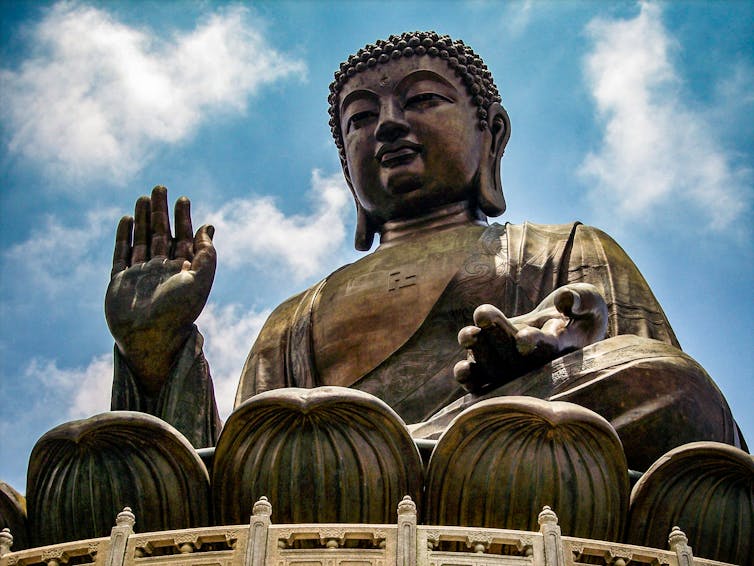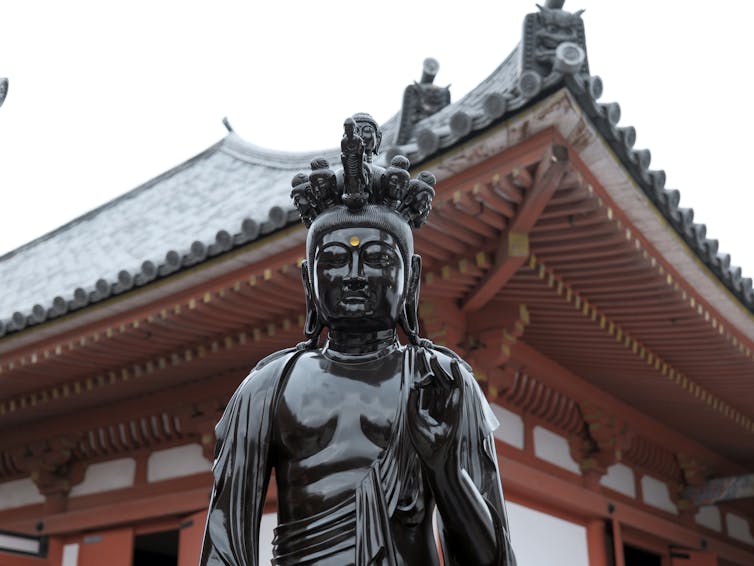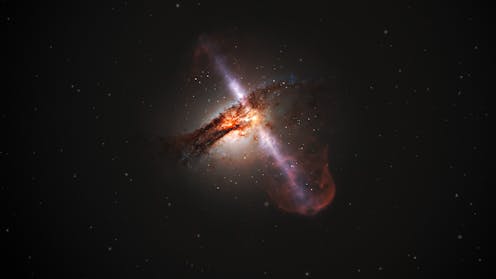Source: The Conversation – Global Perspectives – By Eugene Y. Chan, Associate Professor of Marketing, Toronto Metropolitan University
Why did Aritzia open a café inside its flagship store in Toronto? Why did Burberry pivot from fashion photography to cinematic ads that transport viewers into dreamlike sequences? And why is Simons, Canada’s remaining department store, incorporating art and interactive technologies into its retail spaces?
The answer lies in a trend known as escapist marketing. In an era marked by economic uncertainty, climate anxiety, geopolitical tensions and relentless digital fatigue, brands are turning to fantasy, storytelling and emotionally immersive design to sell products to consumers.
Escapist marketing is a strategy that creates emotionally immersive experiences to help consumers temporarily escape from reality, often through fantasy, nostalgia or idealized lifestyles. It taps into the desire for relief from stress or monotony by offering imaginative or aspirational narratives.
Escapist marketing has been gaining traction in Canada as consumers are drawn to brands that spark imagination and emotional engagement. According to a 2024 Retail Council of Canada report, Gen Z shoppers prefer brands that offer emotional connection, purpose and creativity.
The inaugural Great Canadian Brand Index, which one of us (Eugene Y. Chan) helped develop, found that brands perceived as adventurous, honest and imaginative scored highest in overall public favourability. These are precisely the qualities expressed through fantastical storytelling.
As marketing professors and researchers, we’ve been studying how and why this approach works, and we’ve found it’s grounded in psychology.
The rise of fantasy in branding
While brands have long used aspiration in their marketing, today’s strategies feel noticeably different. The focus has shifted from luxury and exclusivity to escapism itself, and it’s becoming increasingly visible across industries.
Consider Coca-Cola’s “Real Magic” campaign, for instance, which uses AI-generated imagery to create whimsical dreamscapes. Or Apple’s recent “Mother Nature” ad, which reframes a corporate report about the brand’s support of environmental and social issues as a high-concept film starring Octavia Spencer.
In London, Gucci’s “Gucci Cosmos” series invites visitors into a surreal world of time travel and design history.
These marketing campaigns are all designed to be emotional experiences for consumers. This means that the emotional reactions consumers have during interactions with a brand, product or service influence their attitudes, memories and future decision-making. These emotions deepen engagement and strengthen brand loyalty.
As consumers continue to feel burned out and overstimulated, fantasy in the form of escapism offers them mental relief. Research shows that immersive experiences — whether through entertainment, retail environments or brand storytelling — can distract from stressors and promote emotional recovery. By providing a temporary break from reality, fantasy-driven marketing taps into a deep psychological need for comfort and cognitive release.
Why it works: The psychology of escapism
To understand why escapist marketing is so effective, it helps to look at the psychology behind it.
One explanation comes from construal level theory, a framework that examines how psychological distance shapes thinking. When something feels far away in time, space or familiarity, we tend to think about it more abstractly.
Surreal or fantastical branding increases this distance, shifting consumers’ focus from immediate utility to emotional resonance, identity and imagination.
While escapist marketing is a broader strategy that aims to help consumers mentally disengage from reality, surreal or fantastical branding is one specific tactic that uses dreamlike, imaginative visuals and narratives to achieve that goal.
Not all escapist marketing is surreal, but surreal branding often serves as a powerful form of escapism by transporting consumers into an alternate world.
Our research supports this. In one study, we explored how concave visual design — where ad elements curve inward — draws viewers into the imagery, increases feelings of immersion and enhances message recall and persuasion. This is likely why dreamlike campaigns often use fluid, expansive or distorted imagery.
Another factor is anthropomorphism: the tendency to assign human traits to objects or environments. In our studies on destination branding, we found that people are more emotionally connected to places or products that seem to come alive. These findings help explain why fantastical branding resonates so strongly with consumers, particularly in times of stress.
Escapism also pairs naturally with luxury branding, where emotional desire often outweighs functional need. In a recent study with our research colleagues, we found that luxury brands were evaluated more favourably when their positioning felt abstract or elevated. Fantasy enhances this effect, allowing consumers to feel both wealthier and transported.
Escapism isn’t a free pass
There’s a fine line between meaningful escapism and empty spectacle. If a brand’s fantasy narrative feels disconnected from its action, or appears to mask unethical practices, consumers are quick to notice.
Greenwashing, AI overuse or tone-deaf advertising can easily backfire on businesses.
When consumers perceive a brand as inauthentic — whether through misleading sustainability claims, excessive reliance on AI or insensitive messaging — it can erode trust, trigger public criticism and lead to brand avoidance.
Studies show that such missteps often result in reputational damage and decreased customer loyalty, particularly among values-driven or socially aware consumers
This is where the concept of radical honesty intersects with escapism. The most effective marketing campaigns today blend creativity with transparency. They tell imaginative stories while also acknowledging real-world issues like carbon emissions, labour practices and social justice issues.
Brands like Patagonia — and Peace Collective in Canada that’s working in conjunction with McDonalds — have managed to strike this balance by combining emotionally impactful ad campaigns with commitments to ethical and sustainable practices.
Consumers want experiences that resonate
In times of economic stress and cultural fatigue, Canadians are seeking experiences that resonate with them. When done thoughtfully and grounded in psychology and authenticity, escapist marketing can respond to consumers’ desire to feel something deeper, even via something as brief as a 30-second ad.
So next time you find yourself smiling at a surreal commercial or lingering in a carefully curated retail space, understand that small moment of wonder is a strategic choice, supported by research.
But while immersive storytelling may captivate audiences, consumers are becoming more discerning about what feels authentic. The future of escapist marketing may lie in the blending of digital and physical realities. Tools like augmented and virtual reality can allow brands to create even more immersive fantasies.
Imagine ordering coffee from an AI-generated character or in a branded metaverse cafe. While it may seem futuristic and fun, many consumers feel uneasy when brands rely too heavily on artificial interactions, fearing a loss of authenticity. This tension highlights the growing divide between technological novelty and the human connection consumers still crave.
As technology evolves, so, too, will consumer expectations of emotional, imaginative engagement. The next chapter in fantasy branding may not just offer us an escape, but could redefine how we experience commerce itself.
![]()
The authors do not work for, consult, own shares in or receive funding from any company or organisation that would benefit from this article, and have disclosed no relevant affiliations beyond their academic appointment.
– ref. Why brands are embracing fantasy: The psychology behind escapist marketing in anxious times – https://theconversation.com/why-brands-are-embracing-fantasy-the-psychology-behind-escapist-marketing-in-anxious-times-259226













